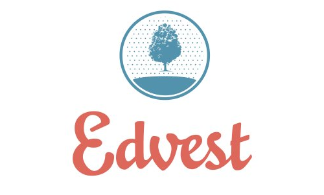Wisconsin – Saving For College in 2024
As parents, grandparents and students, we know college is coming and that we're somehow going to have to pay for it someday. Fortunately, we have many options available to us, including savings bonds, the stock market and 529 plans. Starting a 529 account now is always the best option, no matter how old you (or your child) is. While playing the stock market may yield higher returns on your investment, placing your money into a 529 plan allows it to grow in a tax-free environment. One study even found that when the federal tax benefits were taken into consideration, 529 plans outperformed their benchmarks in every category.
Wisconsin has its own state-operated 529 plan called Edvest College Savings Plan. It is important to note that your child does not have to go to a WI college or university to use this savings account. 529 plan funds can be used at any accredited college or university across the nation, including some K-12 private schools!
Wisconsin College Costs & Trends
Colleges and universities across the United States experienced increased operating costs of 2.5% in 2019. This most recent inflation figure was down slightly from the 2.9 percent increase in 2018 and 3.4 percent increase in 2017. These costs are forwarded directly to students in the form of higher tuition and living expenses. As these costs steadily rise every year, parents are investigating how to help offset these future higher education costs.
These rising costs are hitting closer to home in Wisconsin as well. Wisconsin's higher education costs rose by 18.4% in just the last 10 years, ranking as the 43th highest state.
The table below shows the average one-year costs last year (2023) for different types of Wisconsin colleges and universities.
| Ownership | Degree | Schools | Public Out-of-State Tuition | Public In-State Tuition | Median Debt | Total Annual In-State Cost |
|---|---|---|---|---|---|---|
| Private | 2 year | 26 | $0 | $0 | $0 | $0 |
| Private | 4 year | 43 | $0 | $0 | $0 | $0 |
| Public | 2 year | 18 | $0 | $0 | $0 | $0 |
| Public | 4 year | 16 | $0 | $0 | $0 | $0 |
These costs rise every year. Rising tuition is a major driver of these increased higher education costs. Tuition at a 4-year university in WI rose 4% (ranked 49th in the US), while a 2-year or trade school increased their tuition by 7 percent.
529 Tax Benefits for Wisconsin Residents
Wisconsin offers tax benefits and deductions when savings are put into your child's 529 savings plan.
| For single filers: | $3,280/yr per beneficiary |
|---|---|
| For joint filers: | $3,280/yr per beneficiary |
Best 529 Plans in Wisconsin

Wisconsin offers two 529 college savings plans Edvest is managed by TIAA-CREF Tuition Financing, Inc. and is available on a direct-sold basis. Voya, under contract with TIAA-CREF, manages the Tomorrow’s Scholar® 529 plan which is sold through financial advisors. Wisconsin’s 529 plans do not require Wisconsin residency. The EdVest Advisor-sold plan ceased to operate under the Edvest name in October 2012 and assets held in the plan were combined with the Tomorrow's Scholar® program.
| State Plan Name: | Edvest College Savings Plan |
|---|---|
| Minimum Contribution: | $25 |
| Maximum Contribution: | $472,000 per beneficiary, though contributions can continue to accrue earnings/interest |
| Fees: | 0.08% asset management fee; State administrative fees have been waived through October 29, 2020. |
Wisconsin 529 Plan Statistics
There are 297,835 registered schools in Wisconsin with a total value of $5,516,252,905. That is an average of $18,521 per account. Unfortunately, 529 plans are not widely used... a 2018 study by Edward Jones found that only 29 percent of Americans were even aware that 529 savings plans exist!